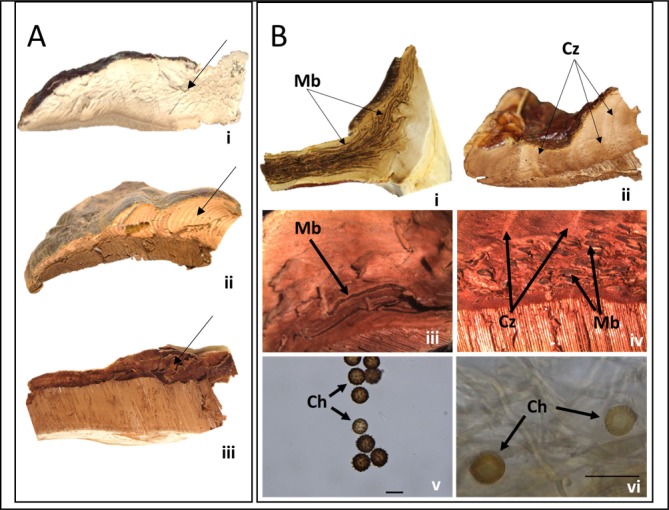Fig 4.
Contextual colors (A) and features (B) of the laccate Ganoderma species of the U.S. (bars = 20 μm) A) broad categories of the context tissue colors, where arrows point to context tissue; i) white context tissue (324WI, G. tsugae), ii) light buff to cream context tissue (112CA, G. polychromum), and iii) dark brown context tissue (265FL, G. zonatum). B) contextual features such as melanoid bands (“Mb”), concentric growth zones (“Cz”), and contextual chlamydospores (“Ch”); i) melanoid bands embedded in context tissue of pileus and stipe (158FL, G. curtisii), ii) concentric growth zones in context tissue of the pileus (171FL, G. sessile), iii) close-up (10x) of melanoid bands in the context tissue of the pileus (NCSCLG 1804, G. curtisii f.sp. meredithiae), iv) close-up (10x) of melanoid bands and concentric growth zones in context tissue of the pileus (NCSCLG 19006, G. martinicense), v) double walled, globose contextual chlamydospore (255FL, T. colossus), and vi) double walled contextual, globose chlamydospore with striated margin (FLAS F59210, G. cf. weberianum).

